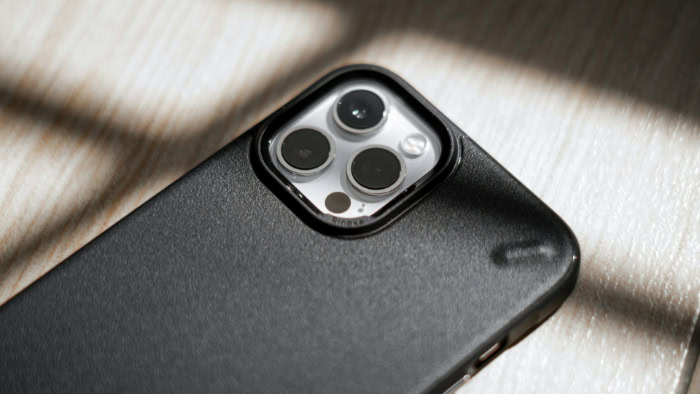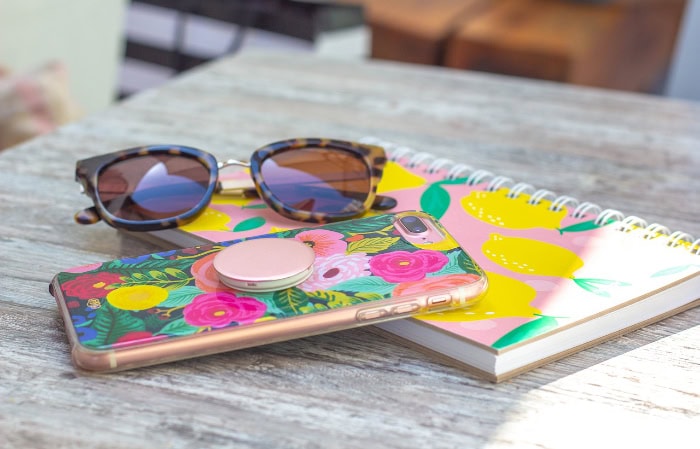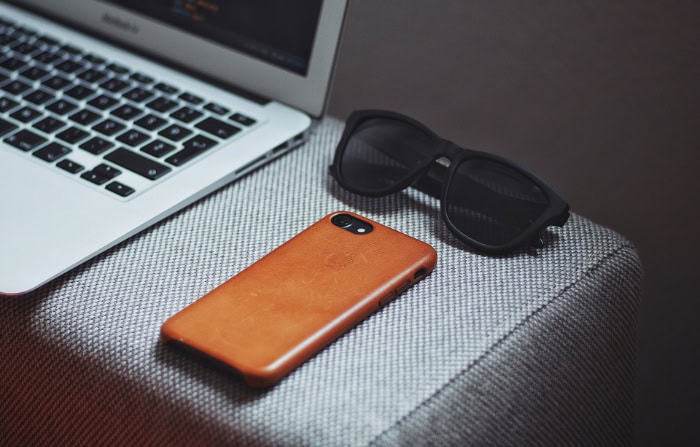Are Phone Cases Necessary? Evaluating the Evidence

Dropping your phone can be a heart-stopping moment. That split second between fumble and impact often decides between relief and regret.
But does it have to be this way? Modern smartphones boast impressive durability, yet millions of users still encase their devices in protective covers. This widespread practice raises questions about necessity versus habit, form versus function.
Are we clinging to outdated fears, or making smart choices to protect valuable tech? From sleek designs to rugged protection, the case market offers endless options.
But in a world of tougher phones, it's time to reassess: are these accessories still needed, or just a comfort blanket we're reluctant to let go?
The Evolution of Smartphone Durability
Smartphones have come a long way since their inception, with manufacturers constantly pushing the boundaries of durability and resilience. As these devices become more integral to our daily lives, the need for robust construction has driven significant advancements in materials and design.
This progress has led many to question the necessity of additional protection through cases.
Advancements in Screen Technology
One of the most vulnerable parts of a smartphone has always been its screen. However, recent years have seen remarkable progress in this area.
Corning's Gorilla Glass, now in its seventh generation, has become a standard feature in many high-end devices. This specialized glass is engineered to withstand scratches, drops, and impacts that would have shattered earlier screens.
The latest iterations of Gorilla Glass incorporate ion exchange technology, where larger ions are stuffed into the glass surface, creating a layer of compressive stress. This process significantly enhances the glass's resistance to damage from everyday use and accidental drops.
Some manufacturers have even developed their own proprietary glass technologies, such as Apple's Ceramic Shield, which claims to be tougher than any smartphone glass.
Improved Water and Dust Resistance
Modern smartphones are far more resilient to environmental factors than their predecessors. The introduction of IP (Ingress Protection) ratings has standardized how we measure a device's resistance to water and dust.
These ratings consist of two digits the first indicating dust protection and the second for water resistance.
For example, a rating of IP68 is common among flagship phones. The ‘6' signifies complete protection against dust, while the ‘8' indicates the device can withstand continuous immersion in water beyond 1 meter depth.
This level of protection means many modern smartphones can survive accidental drops in puddles, sinks, or even brief submersion without damage.
Impact-Resistant Materials in Modern Phones
Beyond screens and water resistance, the overall construction of smartphones has evolved to better withstand impacts. Manufacturers now use a combination of materials to create more durable devices.
Aluminum alloys, once a popular choice for phone frames, have largely been replaced by stronger stainless steel in premium models. This change provides better structural integrity and impact resistance.
Some manufacturers have also experimented with titanium frames, known for their strength-to-weight ratio.
The back panels of many phones now feature toughened glass or high-strength polymers. These materials not only look sleek but also contribute to the overall durability of the device.
Some manufacturers have gone a step further, incorporating shock-absorbing materials into the phone's internal structure to better distribute impact forces and protect sensitive components.
The Case for Cases: Protection and Functionality

Despite the advancements in smartphone durability, many users still opt for protective cases. These accessories offer an extra layer of security and often provide additional features that enhance the overall user experience.
Types of Protection Offered by Cases
Phone cases primarily serve to protect devices from everyday wear and tear, as well as accidental damage. They offer several forms of protection that complement the built-in durability of modern smartphones.
Impact absorption and drop protection are perhaps the most critical functions of a phone case. Many cases are designed with materials like silicone, rubber, or advanced polymers that absorb and distribute the force of impacts.
This can significantly reduce the risk of damage when a phone is dropped or bumped against hard surfaces. Some cases even feature air pockets or reinforced corners to provide extra protection to the most vulnerable parts of the device.
Scratch and scuff prevention is another important aspect of case protection. While many modern phones have scratch-resistant screens, the back and sides of the device can still be susceptible to marks and scratches from keys, coins, or other objects in pockets or bags.
Cases provide a barrier between the phone's surface and potential sources of scratches, helping to maintain the device's aesthetic appeal and resale value.
Additional grip and handling security is a often-overlooked benefit of phone cases. Many smartphones have sleek, smooth surfaces that can be slippery to hold.
Cases with textured surfaces or ergonomic designs can improve grip, reducing the likelihood of accidental drops. This added security can be particularly valuable for larger phones or for users with smaller hands.
Enhanced Functionality
Beyond protection, many phone cases offer additional features that can enhance the functionality of the device.
Built-in stands and card holders are common additions to many case designs. Stands allow users to prop up their phones for hands-free viewing of videos or video calls, which can be particularly useful during long flights or when working at a desk.
Card holders integrated into cases can serve as a convenient wallet alternative, allowing users to carry essential cards without the need for a separate wallet.
Battery cases for extended life are a popular option for users who find themselves frequently running low on power. These cases incorporate an additional battery that can significantly extend the phone's usage time.
While they add some bulk to the device, the trade-off in extended battery life can be well worth it for heavy users or travelers.
Waterproof cases for extreme conditions take water resistance to the next level. While many modern smartphones have some degree of water resistance, waterproof cases can provide protection for extended submersion or in more challenging environments.
These cases are particularly valuable for outdoor enthusiasts, water sports participants, or those who work in wet conditions.
The Argument Against Cases: Design and User Experience

While phone cases offer protection and additional functionality, they also come with potential drawbacks that can impact the overall user experience. Many smartphone enthusiasts argue that cases detract from the device's intended design and can interfere with its features.
Impact on Smartphone Aesthetics and Design Intent
Smartphone manufacturers invest significant resources in designing devices that are not only functional but also visually appealing. The sleek lines, premium materials, and carefully chosen color options are all part of the phone's identity.
By covering a phone with a case, users may be hiding the very design elements that attracted them to the device in the first place.
Many modern smartphones feature glass backs, metal frames, or unique finishes that contribute to their premium look and feel. Cases often obscure these design elements, replacing them with generic plastic or rubber exteriors.
This can be particularly disappointing for users who have chosen their phone based on its aesthetic appeal.
Moreover, the trend towards thinner and more elegant devices is somewhat negated by the addition of a bulky case. The slim profile that manufacturers work hard to achieve is often lost once a protective cover is added, altering the phone's intended form factor.
Added Bulk and Weight Considerations
One of the most noticeable effects of using a phone case is the added bulk and weight it brings to the device. While individual cases vary, even slim options add some thickness to the phone, and more protective cases can significantly increase its size.
This additional bulk can make the phone less comfortable to hold and more difficult to slip into pockets or small bags. For users who appreciate the sleek, lightweight design of modern smartphones, the added heft of a case can be a significant drawback.
The extra weight, though often minimal, can also affect the balance of the phone in hand, potentially altering the user's grip and comfort level during extended use.
Potential Interference with Features
Cases can sometimes interfere with the functionality of certain smartphone features, potentially diminishing the user experience.
Wireless charging efficiency can be affected by thick or metal-reinforced cases. While many modern cases are designed to be compatible with wireless charging, some materials can reduce charging speed or even prevent charging altogether.
Heat dissipation and performance can also be impacted by phone cases. Smartphones generate heat during use, especially during resource-intensive tasks like gaming or video streaming.
Cases can act as insulators, trapping this heat and potentially leading to reduced performance as the device throttles to manage temperature.
Button responsiveness and haptic feedback may be compromised by some cases. Thick or rigid cases can make buttons harder to press or reduce the tactile feedback users receive when interacting with their devices.
This can be particularly noticeable with volume and power buttons, as well as with devices that feature pressure-sensitive screens or haptic home buttons.
Psychological Aspects: Risk Perception and Attachment to Devices
The decision to use a phone case often involves psychological factors related to risk perception and attachment to devices.
Some users may develop an over-reliance on cases, leading to a false sense of security. This can result in less careful handling of the device, potentially increasing the risk of damage in situations where the case might not provide adequate protection.
Conversely, the constant presence of a case can reinforce the perception that the phone is fragile and in constant need of protection. This may lead to heightened anxiety about damaging the device, detracting from the enjoyment and carefree use of the smartphone.
Additionally, the use of a case can affect the user's emotional connection to their device. The tactile experience of holding and using a bare smartphone, with its carefully designed surfaces and materials, can create a more intimate connection between user and device.
A case acts as a barrier, potentially reducing this sense of connection and ownership.
Beyond Traditional Cases: Alternative Protection Methods

As the debate over phone cases continues, innovative alternatives have emerged to address the need for protection while minimizing the drawbacks associated with traditional cases. These solutions aim to preserve the original design and feel of smartphones while still offering varying degrees of protection.
Advanced Screen Protectors and Their Effectiveness
Screen protectors have evolved significantly from the flimsy plastic films of the past. Modern screen protectors offer impressive protection without compromising the touch sensitivity or visual clarity of the display.
Tempered glass screen protectors are now a popular choice among smartphone users. These thin layers of specially treated glass adhere to the phone's screen, providing a sacrificial layer that can absorb impacts and prevent scratches.
High-quality tempered glass protectors can withstand significant force, often shattering to absorb the impact that would otherwise damage the phone's screen.
Some advanced screen protectors incorporate additional features such as privacy filters, which limit the viewing angle of the screen to prevent onlookers from seeing sensitive information.
The effectiveness of these protectors has improved to the point where many users feel confident relying on them as their primary form of protection, especially when combined with careful handling of the device.
Smartphone Skins and Wraps
For users who want to protect their devices from scratches and minor impacts without adding bulk, smartphone skins and wraps offer an attractive alternative to traditional cases.
These thin, adhesive-backed coverings are custom-cut to fit specific phone models perfectly. Made from materials like vinyl or thin polymers, skins can protect the back and sides of a phone from everyday wear and tear.
They're particularly effective at preventing scratches and scuffs that can occur when a phone is placed on rough surfaces or carried in a pocket with keys or coins.
One of the main advantages of skins is their ability to preserve the original form factor of the phone. They add minimal thickness, allowing users to enjoy the sleek design of their devices while still providing a layer of protection.
Additionally, skins come in a wide variety of colors and textures, allowing for personalization without the bulk of a case.
However, it's important to note that while skins offer good protection against scratches, they provide limited impact protection in the event of drops or severe impacts.
Making an Informed Decision: Factors to Consider
Deciding whether to use a phone case involves weighing various factors that are unique to each individual. There's no one-size-fits-all answer, as the best choice depends on personal circumstances, preferences, and the specific device in question.
Assessing Individual Lifestyle and Usage Patterns
Your daily routine and how you use your phone play a crucial role in determining the level of protection it needs. Consider the environments you frequently expose your phone to and the activities you engage in while using it.
For instance, if you work in construction or often engage in outdoor activities, your phone might be at higher risk of drops, impacts, or exposure to dust and moisture. In such cases, a robust protective case might be essential.
On the other hand, if you primarily use your phone in an office setting or at home, the risk of damage might be lower, potentially reducing the need for heavy-duty protection.
Think about how you carry your phone. Do you often place it in a bag with other items that could scratch it? Or do you typically keep it in a dedicated pocket? Your carrying habits can influence the type of protection that would be most beneficial.
Also, consider how frequently you use your phone. Heavy users who constantly handle their devices might benefit from the added grip and drop protection that cases provide, while occasional users might be comfortable with minimal or no additional protection.
Evaluating Phone Model-Specific Durability
Not all smartphones are created equal when it comes to durability. Different models and brands have varying levels of built-in protection and resilience to damage.
Research your specific phone model to understand its strengths and weaknesses.
Some high-end smartphones boast features like water resistance, dust protection, and reinforced glass that make them more durable out of the box. For these models, you might feel comfortable using minimal protection or forgoing a case altogether.
Conversely, if your phone model is known to have vulnerabilities, such as a particularly fragile screen or a slippery design, you might want to prioritize protection. Look for durability tests and user experiences specific to your phone model to gauge its need for additional safeguarding.
Cost-Benefit Analysis: Case Investment vs. Potential Repair/Replacement
Financial considerations often play a significant role in the decision to use a phone case. Compare the cost of a quality case against the potential expense of repairing or replacing your phone if it gets damaged.
High-end smartphones can be expensive to repair, with screen replacements often costing hundreds of dollars. In this context, investing in a protective case might be a cost-effective insurance policy.
However, if you have phone insurance or your device is relatively inexpensive to repair or replace, you might be more comfortable taking the risk of using it without a case.
Consider also the resale value of your phone. If you plan to sell or trade in your device in the future, keeping it in pristine condition with the help of a case could result in a higher resale value, potentially offsetting the initial cost of the case.
Balancing Protection, Functionality, and Personal Preferences
Ultimately, the decision to use a phone case involves finding the right balance between protection, functionality, and your personal aesthetic preferences.
If you value the original design of your phone and enjoy the feel of the device as the manufacturer intended, you might lean towards minimal protection options like skins or slim cases. These allow you to preserve the phone's aesthetics while still providing some level of protection.
On the other hand, if you prioritize functionality, you might opt for a case that offers additional features like card storage or a kickstand, even if it alters the phone's original design.
Consider also how much you're willing to compromise on the phone's form factor. Some users find bulky cases cumbersome and prefer to risk damage rather than sacrifice the sleekness of their device.
Others feel more at ease knowing their phone has maximum protection, even if it comes at the cost of added bulk.
Your personal style and preferences matter too. Phone cases can be a form of self-expression, and if having a case that matches your style is important to you, it might influence your decision to use one.
By carefully considering these factors – your lifestyle, your phone's specific durability, the financial implications, and your personal preferences – you can make an informed decision about whether to use a phone case and, if so, what type of protection best suits your needs.


